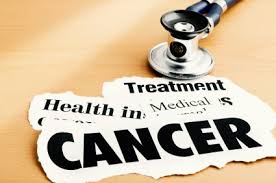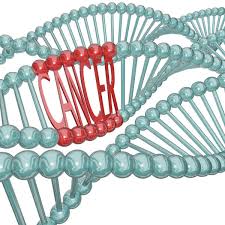 Scientists from the Johns Hopkins Kimmel Cancer Center have created a statistical model that measures the proportion of cancer incidence, across many tissue types, caused mainly by random mutations that occur when stem cells divide. By their measure, two-thirds of adult cancer incidence across tissues can be explained primarily by “bad luck,” when these random mutations occur in genes that can drive cancer growth, while the remaining third are due to environmental factors and inherited genes.
Scientists from the Johns Hopkins Kimmel Cancer Center have created a statistical model that measures the proportion of cancer incidence, across many tissue types, caused mainly by random mutations that occur when stem cells divide. By their measure, two-thirds of adult cancer incidence across tissues can be explained primarily by “bad luck,” when these random mutations occur in genes that can drive cancer growth, while the remaining third are due to environmental factors and inherited genes.
“All cancers are caused by a combination of bad luck, the environment and heredity, and we’ve created a model that may help quantify how much of these three factors contribute to cancer development,” says Bert Vogelstein, M.D., the Clayton Professor of Oncology at the Johns Hopkins University School of Medicine, co-director of the Ludwig Center at Johns Hopkins and an investigator at the Howard Hughes Medical Institute.
“Cancer-free longevity in people exposed to cancer-causing agents, such as tobacco, is often attributed to their ‘good genes,’ but the truth is that most of them simply had good luck,” adds Vogelstein, who cautions that poor lifestyles can add to the bad luck factor in the development of cancer.
The implications of their model range from altering public perception about cancer risk factors to the funding of cancer research, they say. “If two-thirds of cancer incidence across tissues is explained by random DNA mutations that occur when stem cells divide, then changing our lifestyle and habits will be a huge help in preventing certain cancers, but this may not be as effective for a variety of others,” says biomathematician Cristian Tomasetti, Ph.D., an assistant professor of oncology at the Johns Hopkins University School of Medicine and Bloomberg School of Public Health. “We should focus more  resources on finding ways to detect such cancers at early, curable stages,” he adds.
resources on finding ways to detect such cancers at early, curable stages,” he adds.
In a report on the statistical findings, published Jan. 2 in Science, Tomasetti and Vogelstein say they came to their conclusions by searching the scientific literature for information on the cumulative total number of divisions of stem cells among 31 tissue types during an average individual’s lifetime. Stem cells “self-renew,” thus repopulating cells that die off in a specific organ.
Source: News Medical
*The Presidential Healthcare Center’s Executive Physicals include cancer screening and tumor marker tracking
